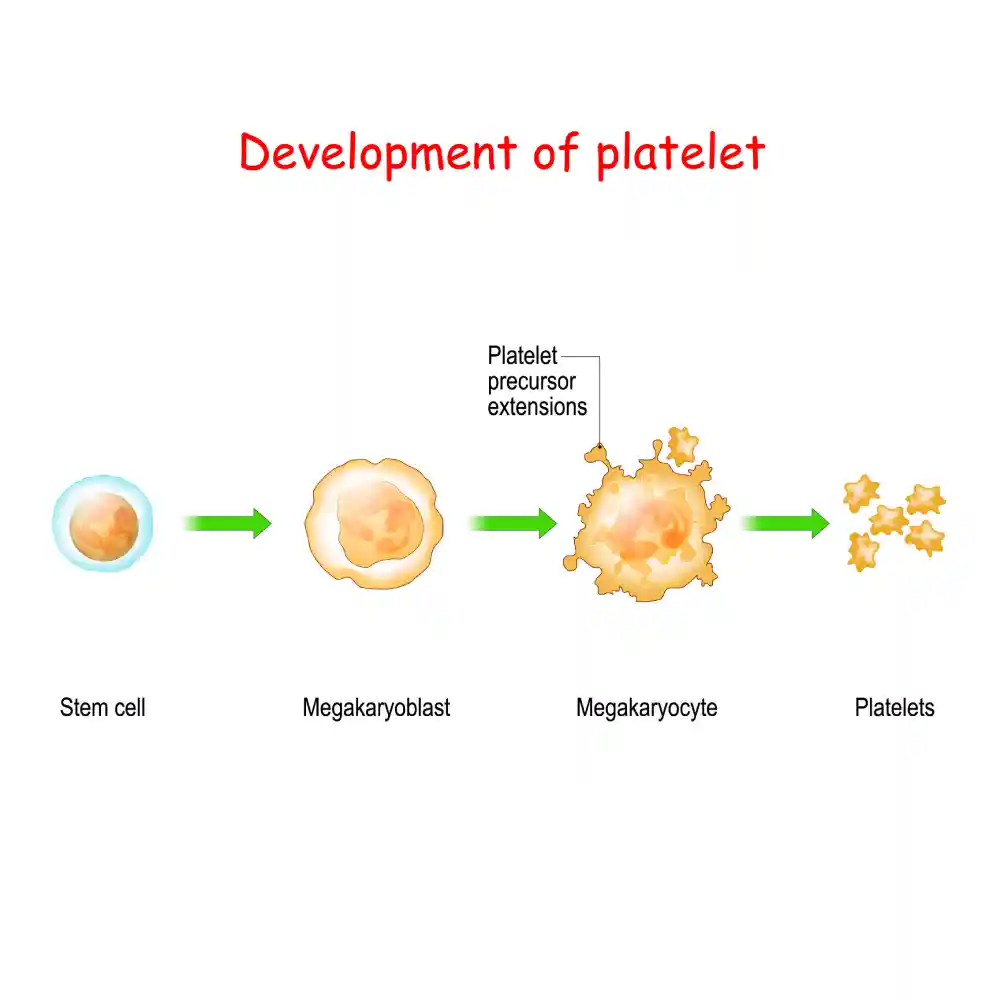What are platelets?

Platelets are not cells but rather fractions of cells called megakaryocytes, which are found in the bone marrow. Their main function is to stop blood from escaping the blood vessels by plugging any hole that forms in them. If an injury occurs upon contact between platelets and a non-smooth surface, they stick to that surface and begin sending out signals to other platelets to aggregate and plug the defect. This process occurs on a daily basis, because even small bumps or falls can cause blood vessels to rupture, and sometimes with no cause at all.
The normal platelet count is 150,000-450,000 per cubic milliliter. There are many conditions affecting platelet number and functions. In some, there is an increased number, called thrombocytosis, or decreased numbers known as thrombocytopenia. In other conditions, there is a normal platelet count, but they have an impaired function called thrombasthenia or “weak platelets”. The overall picture of such conditions reflects on controlling bleeding in case of decreased numbers and function or unnecessary clot formation in cases of thrombocytosis.
